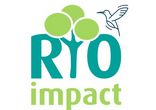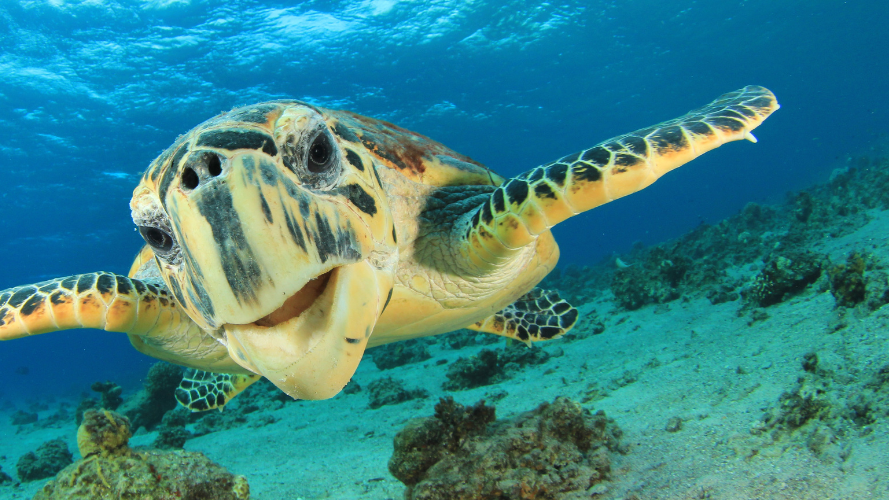
Coral Reefs - their values, threats and future
Why are coral reefs important for our planet globally and locally ?
Coral reefs are complex and diverse ecosystems which directly benefit over 1 billion people, giving food, shelter, livelihood, coastal protection and breakthrough medicines. In terms of their economic value, reefs give $375 USD billion per year (1) to income and employment, ecotourism, and fishing and marine recreation.
Focusing on their vital value towards human health, scientists believe that keeping coral “underwater rainforests” healthy also means further advances toward marine investigation and research findings. In fact, they are recognised as the “medicine cabinets” of the 21st century.
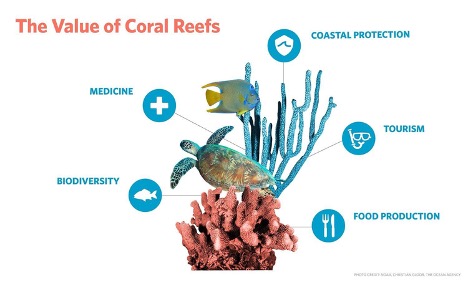
Reefs cover only 0,5% of the floors of the world’s oceans. To put it into perspective, coral reefs worldwide take up approximately half the size of France. Even with this small percentage, they support 25% of all marine biodiversity, including thousands of species which depend on coral reef ecosystems to survive. In this regard, an underlying threat corals also suffer from is that we have much more to discover in terms of identification and description of the species. The Indo-Pacific region (including Australia and Southeast Asia) alone supports more than half a trillion corals. So what are the pressures that each continent faces and needs to globally coordinate ?
Global and direct pressures that corals suffer from
Climate change, ocean acidification, runoff, pollution, overfishing, irresponsible tourism, disease, predators and many other factors seriously affect coral reef health worldwide. All of these factors have destroyed more than 50% of coral reef ecosystems globally since the 1950s.
Therefore, in only the last 30 years, coral survival rates have plunged severely mainly because the ocean has had to absorb more than half of the heat from our CO2 emissions. Rising temperatures are the biggest danger for reefs.
By the 1980s, scientists started seeing coral bleaching events become more frequent and more deadly. Coral bleaching is when corals respond in stress of warmer ocean temperatures. Then, from 2009 to 2018, 14% of the world’s reef ecosystem species and biodiversity disappeared (2).
Pressures have raised as coral species and biodiversity are disappearing at an alarming rate. The health of coral reef ecosystems is experiencing genetic weakness, jeopardising recovery rates and putting them under threat. Why is this happening ?
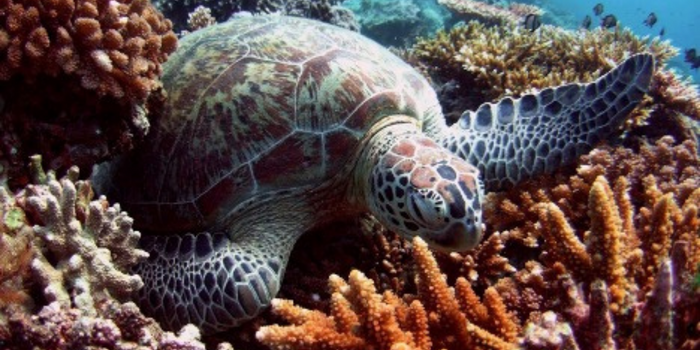
The Paris Agreement on Climate Change was targeted to limit global warming to 1.5 Celsius. However, “there is no safe limit to global warming for coral reefs worldwide”, meaning that even if this target was met, 90% of the corals would still not be safe by the end of the century (3).
Coral ‘doomsday’ is the worst-case scenario that every coral reef in the world will bleach and face extinction by 2100.
With all these issues appearing, what are some possibilities to prevent further damage and restore coral reefs globally and locally ?
The local, regional and global opportunities to restore them and restoration programs
“It’s humanity’s fault that corals are in hot water” and as a result : “it’s up to humanity to help the corals keep up.” (4)
Coral reefs need to take up more real estate in terms of their place in the arena of climate change mitigation strategies. According to the World Economic Forum (5), corals must “gain momentum” and more “coordinated efforts” in financial support. In addition, more Protected Areas must be recognised.
The 10 golden rules of reforestation are included in the UN decade on Ecosystem Restoration (6), involving over 70 countries worldwide (7). Corals are considered as “the rainforests of the sea”. Aims have now been made to translate the actions of reforestation into reef restoration, creating a more of a “shared vision” on ecosystem restoration (8). Countries must work together globally to quickly slow down our carbon emissions so that corals have time to recover, and adapt to warming temperatures.
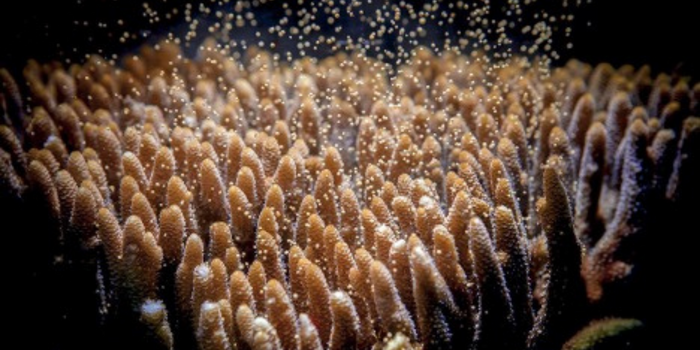
So from terrestrial to underwater, reef restoration efforts “can and should be accelerated” by management, local efforts, and reef resilience (9).
In this context financing initiatives and mechanisms emerge which include : the ‘Global Fund for Coral Reefs’ (10) and the ‘Blue Natural Capital Financing Facility’ (11).
How you and your community can make an impact and engage
Logistics, finances, keeping the project stable for long-term, including unknown ecological and biological factors make community efforts of reef restoration a challenge (12). The flow of funding from private and government donors needs more work in building scalable solutions that directly reach IPLCs (Local Indigenous Peoples Communities).
Local management plays a big part, involving coordinated and targeted efforts in projects such as using eco tourism for coral gardening and beautifying architectural landscapes.
Examples of initiatives that aim to support coral restoration include :
To prevent and reduce further damage and losses to a reef, possibilities include :
- reduce the amount of vessels anchoring/grounding
- keep the habitat balanced (controlling invasive species)
- build reef resilience (growing genetically warmer-temperature-adapted coral fragments)
- maintain genetic diversity
- outplanting fragments (13)
Conclusion
As an individual there are many activities that you can engage in today. Areas where you may make a difference are :
- Reduce your carbon footprint (eg. Drive less)
- Reuse and recycle responsibly
- Choose sustainable seafood (search for MSC certification)
- Use less fertilizers and pesticides
- Dispose of unnatural chemicals responsibly
- Be energy efficient
- Sign a petition to show you care (14)
- Learn more about coral reefs and if you are below 18, you can take the survey on how much knowledge youth (age 13-18) has about restoration efforts in their country and region (15)
The first and foremost important area is educating the next generation and assisting them in learning about protecting and restoring the reefs that we all depend on.
Author : Sandra Lara Herrera
Photos de l’article :
– Coraux : ©Mikaela Nordborg / Australian Institute of Marine Science
– Tortue : ©Reuters/David Loh
(1) https://unfccc.int/blog/coral-reefs
(2) https://www.unep.org/news-and-stories/press-release/rising-sea-surface-temperatures-driving-loss-14-percent-corals-2009
(3) https://www.sciencealert.com/study-warns-safe-havens-for-coral-reefs-will-be-almost-non-existent-at-1-5-c-warming
(4) https://www.science.org/content/article/researchers-embrace-radical-idea-engineering-coral-cope-climate-change
(5) https://www.weforum.org/agenda/2019/11/this-is-why-coral-reefs-are-so-vital-for-the-planet/
(6) https://icriforum.org/coralrestoration/
(7) https://icriforum.org/coralrestoration/
(8) https://www.genevaenvironmentnetwork.org/resources/updates/un-decade-on-ecosystem-restoration-2021-2030/
(9) https://conbio.onlinelibrary.wiley.com/doi/10.1111/cobi.13890
(10) https://globalfundcoralreefs.org/
(11) https://bluenaturalcapital.org/bncff/
(12) https://www.frontiersin.org/articles/10.3389/fmars.2020.00672/full
(13) https://coralreef.noaa.gov/gallery/infographic/coral-reefs-restoration.html
(14) https://worldoceanday.org/take-action/conservation-action-focus/
(15) https://docs.google.com/forms/u/1/d/e/1FAIpQLSflQS2HP4_1KDYwENdO5M3rsJA39_Y_0SuHsApXN9OVYahDZg/viewform

